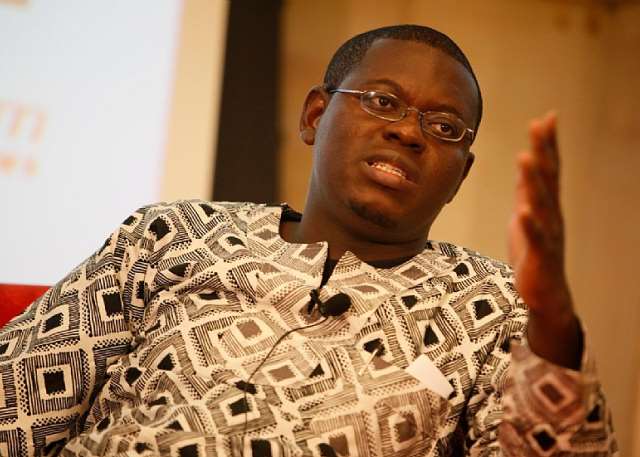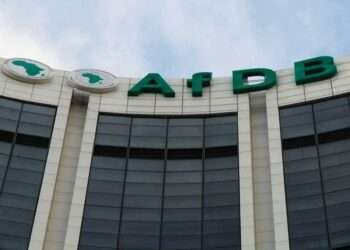Bright Simons, Vice President of IMANI Africa, has opened a detailed explanation of the recent surge in the Ghanaian Cedi’s value, highlighting both domestic government actions and international influences.
He credited the effective public education by Ghana’s pundits and analysts for the widespread understanding that the Cedi’s approximately 25 percent gain since January 2025 is not coincidental but the result of a combination of factors.
“Due to excellent public education by Ghana’s pundits & analysts, everyone now knows that the massive rally of the Cedi (~25% gains since January 2025) is due to both domestic actions by the government & international factors beyond its control”
Bright Simons, Vice President of IMANI Africa
An exchange rate, Simons explained, functions like any other price in the economy, determined by supply and demand. “As the demand for cedis rises relative to the demand for the dollar, the cedi’s price, measured in dollars, goes up.” This market dynamic explains much of the currency’s recent rally.
Simons emphasized the role of Ghana’s main export commodities, particularly gold and cocoa, in increasing dollar inflows. “Since January 2024, the price of gold has gone up by over 60 percent,” he noted, adding that for the same quantity of gold, Ghana now receives significantly more dollars.
Cocoa prices have also increased, contributing to the supply side of the equation. Importantly, the Ghanaian government’s GoldBod has not yet licensed any aggregators, meaning that the current market structure remains unchanged. This long rally in gold prices alone accounts for the supply-side trends observed.

On the demand side, Simons illustrated the complexity with multiple categories of dollar buyers.
These include individuals who buy dollars intermittently for income purposes, speculators seeking profit, businesses needing dollars to import goods, wealthy individuals preserving savings in dollars, traders paying overseas counterparties, and citizens requiring dollars for travel and personal services abroad.
The varied behaviors of these groups lead to the wild swings seen in the currency markets.
“When it looks like the dollar will keep falling, most people who hold dollars only intermittently rush to dump their stash because they can literally not afford to absorb losses”
Bright Simons, Vice President of IMANI Africa
This sudden dumping forces speculators to reduce holdings, though some longer-term market players take advantage of the situation by accumulating dumped dollars, waiting for a better time to sell.
Structural Demand
Despite temporary surges driven by market sentiment, Simons pointed out that such rallies rarely last due to structural demand. This demand depends on Ghana’s economic competitiveness relative to its major trading partners, such as China, the European Union, the United States, the UAE, and the UK.
Simons highlighted significant economic indicators that affect this competitiveness: inflation and interest rates.
“Inflation in China has been under 1 percent in 2025, and interbank interest rates under 2 percent, while Ghana’s inflation and interest rates have stayed considerably higher, above 21 percent and 27 percent respectively”
Bright Simons, Vice President of IMANI Africa

These fundamental mismatches mean that the real effective exchange rate has not shifted much, limiting the sustainability of the Cedi’s rally. He warned that unless Ghana’s inflation and interest rates adjust quickly, the current exchange rate misalignment could cause the rally to hit a “structural block” in the coming months.
Commodity prices remain a critical wild card in the exchange rate equation too. Simons cautioned that much of Ghana’s fiscal and monetary policy is riding on the unprecedented hike in gold prices. Yet, “once commodity prices plateau or fall, sentiment can switch abruptly,” potentially reversing gains.
Additionally, government plans to reduce arrears to contractors and vendors could increase Cedi circulation, impacting currency stability.
Simons also dismissed notions that the government can indefinitely maintain an artificial Cedi-dollar peg. “Government dollar reserves are always dwarfed by the volumes circulating in the private and commercial sector,” he said, calling such claims “unsound.”
The Competitiveness Challenge
According to Simons, balancing economic growth with Cedi stability requires improving Ghana’s fundamental economic competitiveness.
Contrary to common belief, this does not simply mean reducing imports. Healthy economies often see imports grow alongside exports. Ghana has experienced periods since 2015 where trade balances improved without corresponding competitiveness gains, which have contributed to Cedi depreciation.
High tariffs and costly business environments have stifled producers from increasing the importation of high-value intermediates and capital goods. This, in turn, limits Ghana’s ability to produce sophisticated, price-competitive exports.
“Ghana’s export basket remains composed of 80 percent commodities by value, a situation unchanged in 30 years,” Simons noted.

Simons critiqued the government’s attempts to boost sectoral competitiveness, citing a lack of transparency and clear documentation in industrial policy. This opacity hinders learning from mistakes and improving successful initiatives, worsening the already weak policy community and preventing “national learning.”
He introduced the concept of “katanomics” to describe the fracture between politics and policy, where voter demands for stable outcomes clash with the complex processes needed to achieve them.
Simons reflected on Ghana EXIM Bank’s support programs, suggesting that many have been failures cloaked in opacity.
He cited Darko Farms, a notable chicken farming and processing firm, where despite over $4.5 million in government capital injections, productivity remains below subsistence levels. Similar issues affect companies like Ekumfi Juice.
The vice president of Imani Africa advocated for proactive dissemination of government initiative performances to encourage engagement and continuous policy improvement. Without such transparency, the cycle of short-term euphoria followed by medium-term despair over currency depreciation is likely to continue.
“Balancing growth and currency stability is not a matter of market sentiment alone, but of fundamental economic competitiveness supported by transparent, evidence-based policy”
Bright Simons, Vice President of IMANI Africa







